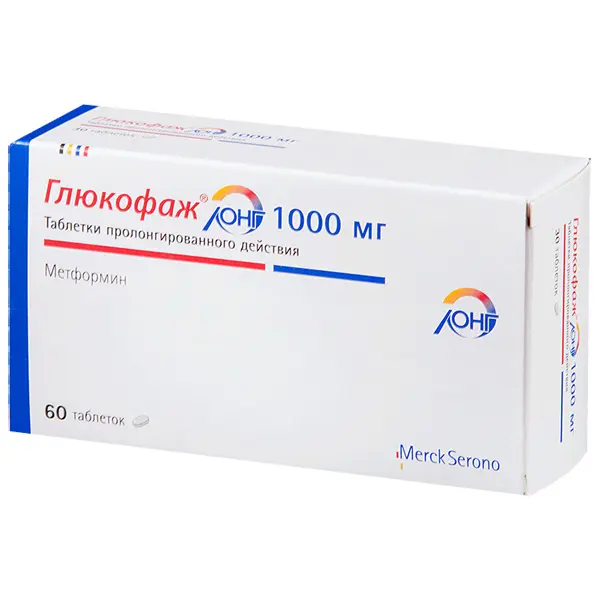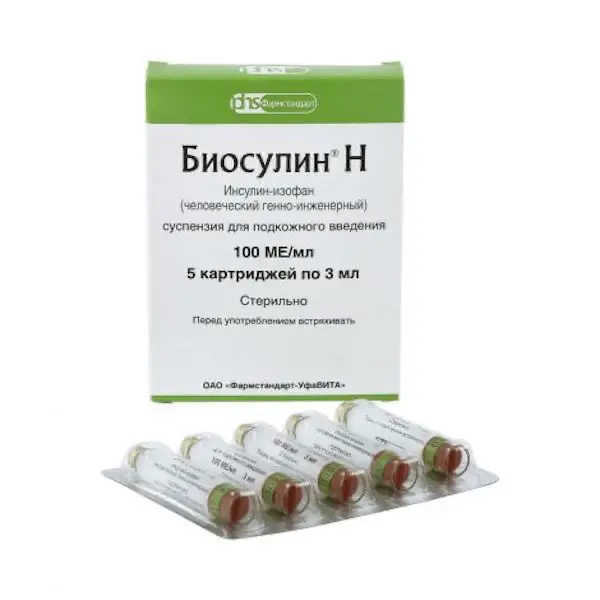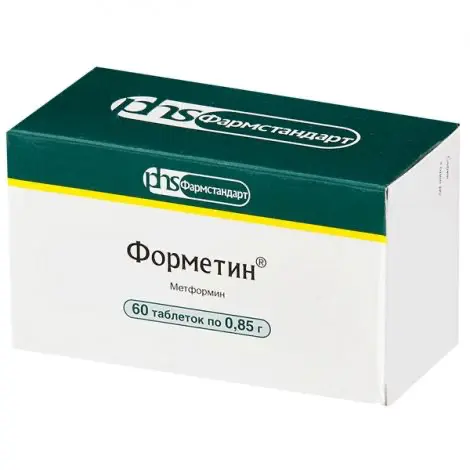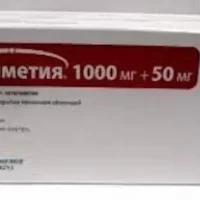Description
Glucophage Long Pharmacodynamics
Metformin is a biguanide with hypoglycemic action, which reduces both basal and postprandial plasma glucose content. It does not stimulate insulin secretion and therefore does not cause hypoglycemia. Increases the sensitivity of peripheral receptors to insulin and glucose utilization by cells. Reduces glucose production by the liver by inhibiting gluconeogenesis and glycogenolysis. Delays the absorption of glucose in the intestine.
Metformin stimulates glycogen synthesis by acting on glycogen synthase. Increases the transport capacity of all types of membrane glucose transporters.
During metformin administration, the patient’s body weight either remains stable or decreases moderately.
Metformin has a favorable effect on lipid metabolism: it reduces total cholesterol, low-density lipoproteins and triglycerides.
Indications
Type 2 diabetes mellitus in adults, especially in obese patients, when diet therapy and physical activity are ineffective:
– As monotherapy;
– In combination with other oral hypoglycemic agents or with insulin.
Contraindications
-High sensitivity to metformin or any excipient.
-Diabetic ketoacidosis, diabetic precoma, coma.
-Renal insufficiency or impaired renal function (creatinine clearance less than 45 ml/min).
-Acute conditions with risk of renal dysfunction: dehydration (with chronic or severe diarrhea, repeated bouts of vomiting), severe infectious diseases (e.g., respiratory tract infections, urinary tract infections), shock.
-Clinically expressed manifestations of acute or chronic diseases that may lead to the development of tissue hypoxia (including acute heart failure, chronic heart failure with unstable hemodynamic parameters, respiratory failure, acute myocardial infarction).
-Extensive surgical operations and injuries when insulin therapy is indicated (see section “Special indications”).
-Hepatic insufficiency, liver dysfunction.
-Chronic alcoholism, acute alcohol poisoning.
-Pregnancy.
-Lactoacidosis (including in anamnesis).
Administration for less than 48 hours before and for 48 hours after radioisotopic or radiological studies with iodine-containing contrast media (e.g., intravenous urography, angiography) (see section “Interaction with other medicinal products”);
-Hypocaloric diet (less than 1000 kcal/day).
-Children under 18 years of age due to the lack of data on its use.
Dosage and administration
- Glucofage® Long 1000 mg is taken orally. Tablets are swallowed whole, without chewing, with plenty of liquid, once a day during or after dinner. Dose of drug Glucofazh® Long 1000 mg is chosen by a doctor individually for each patient on the basis of results of blood glucose concentration measurement.
- Monotherapy and combined therapy in combination with other hypoglycemic agents
– Glucofage® Long 1000 mg should be taken once a day during or after dinner.
– Glucofage® Long 1000 mg is indicated as maintenance therapy for patients receiving metformin in form of tablets with normal release in dose of 1000 mg or 2000 mg. To switch to Glucofage® Long 1000 mg, the daily dose should be equivalent to the daily dose of normal-release metformin.
– Patients taking metformin in the form of normal-release tablets at a dose greater than 2000 mg should not be recommended to switch to Glucofage® Long 1000 mg.
– For patients who do not take metformin, the recommended initial dose of preparation Glucofage® Long is 500 mg or 750 mg once a day with supper (the following forms of release of Glucofage® Long are available: tablets of prolonged action 500 mg and 750 mg). Every 10-15 days it is recommended to adjust the dose on the basis of the results of blood glucose concentration measurement. Slow increase of the dose promotes better tolerability from the gastrointestinal tract.
– In case of change from another hypoglycemic agent the dose adjustment is carried out as described above, starting with glucophage® Long 500 mg or 750 mg with possible subsequent switching to preparation Glucophage® Long 1000 mg. - Combination with insulin
To achieve better glycemic control, metformin and insulin may be used as combination therapy. Usual starting dose of Glucofage® Long is one tablet of 500 mg or 750 mg once a day during dinner, while insulin dose is chosen on the basis of blood glucose concentration measurement results. Further switching to Glucofage® Long 1000 mg is possible. - Daily dose
Maximal recommended dose of preparation Glucofage® Long 1000 mg is 2 tablets per day (2000 mg). If at administration of maximum recommended dose once a day it is not possible to achieve adequate glycemic control, the maximum dose can be divided into two intakes: one tablet of 1000 mg at breakfast and one tablet of 1000 mg at supper. If adequate glycemic control is not achieved in this case, conversion to metformin with normal release (e.g., Glucofage® , film-coated tablets) with maximum daily dose of 3000 mg is possible. - Patients with renal impairment
Metformin can be used in patients with moderate renal insufficiency (creatinine clearance 45-59 ml/min) only in case of absence of conditions that can increase the risk of lactoacidosis.
The initial dose is 500 mg or 750 mg once daily. The maximum dose is 1000 mg per day. Renal function should be carefully monitored every 3-6 months.
If creatinine clearance is below 45 ml/min, the drug should be stopped immediately. - Elderly patients
In elderly patients, the dose of metformin is adjusted based on renal function assessment, which should be performed regularly (See “Special Precautions”). - Dose skipping
If the next dose is missed, the patient should take the next dose at the usual time. Do not take a double dose of the drug Glucofage® Long.





